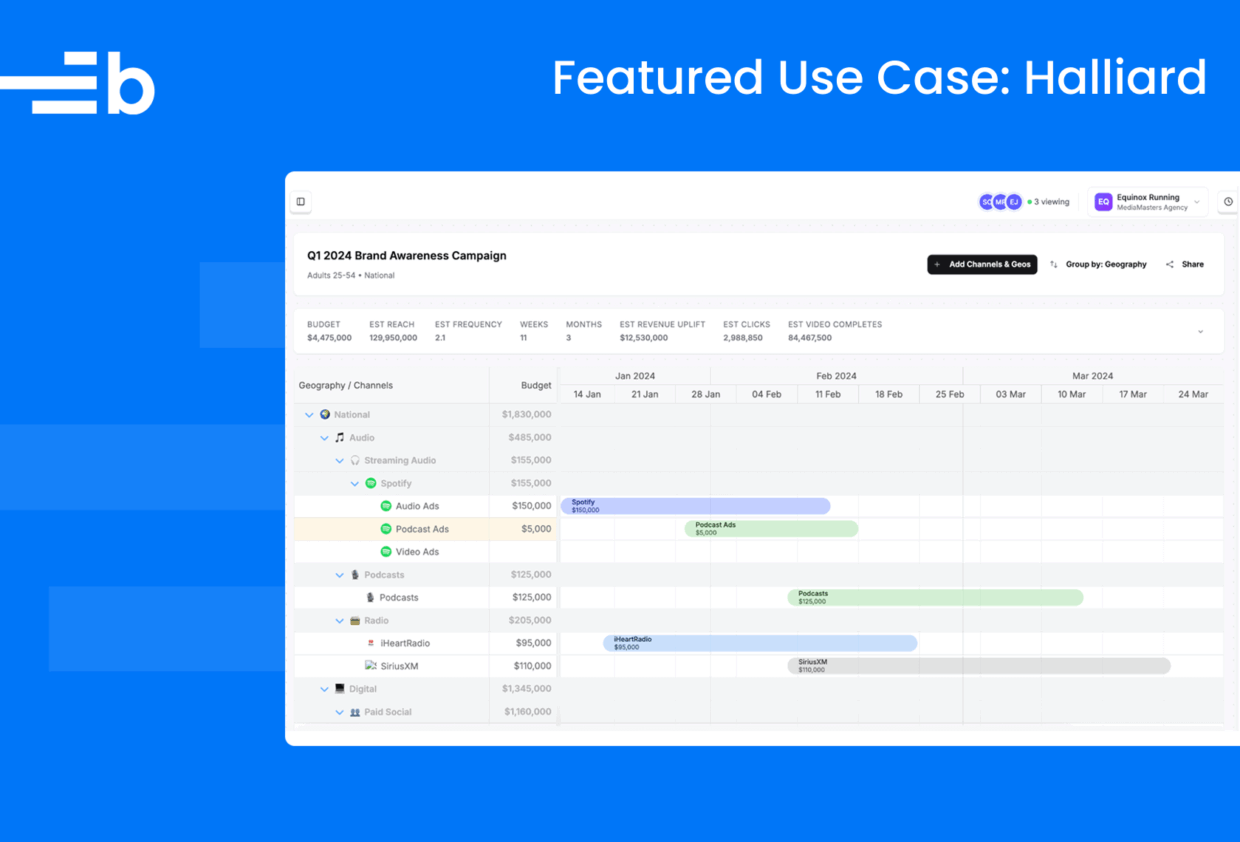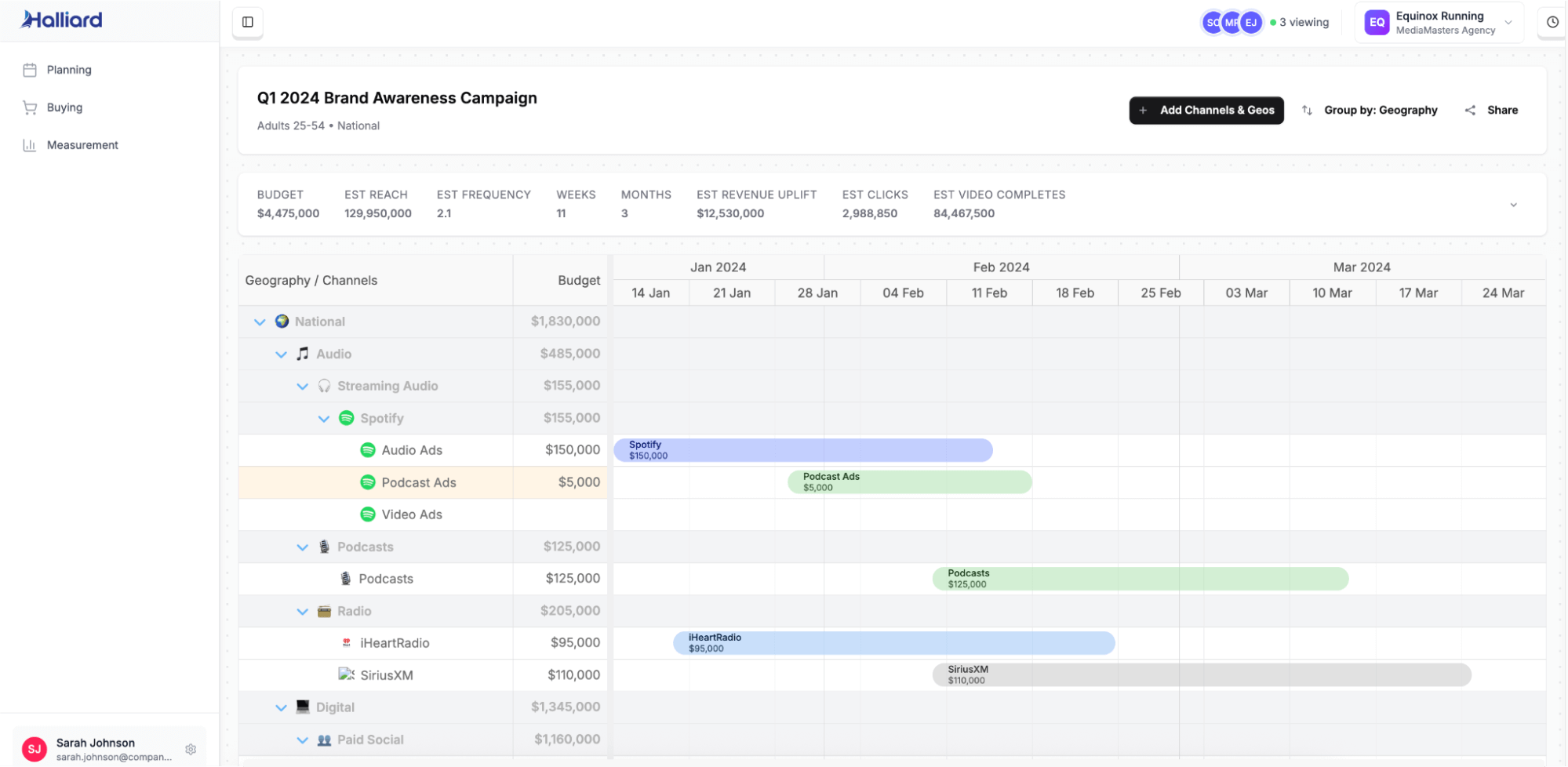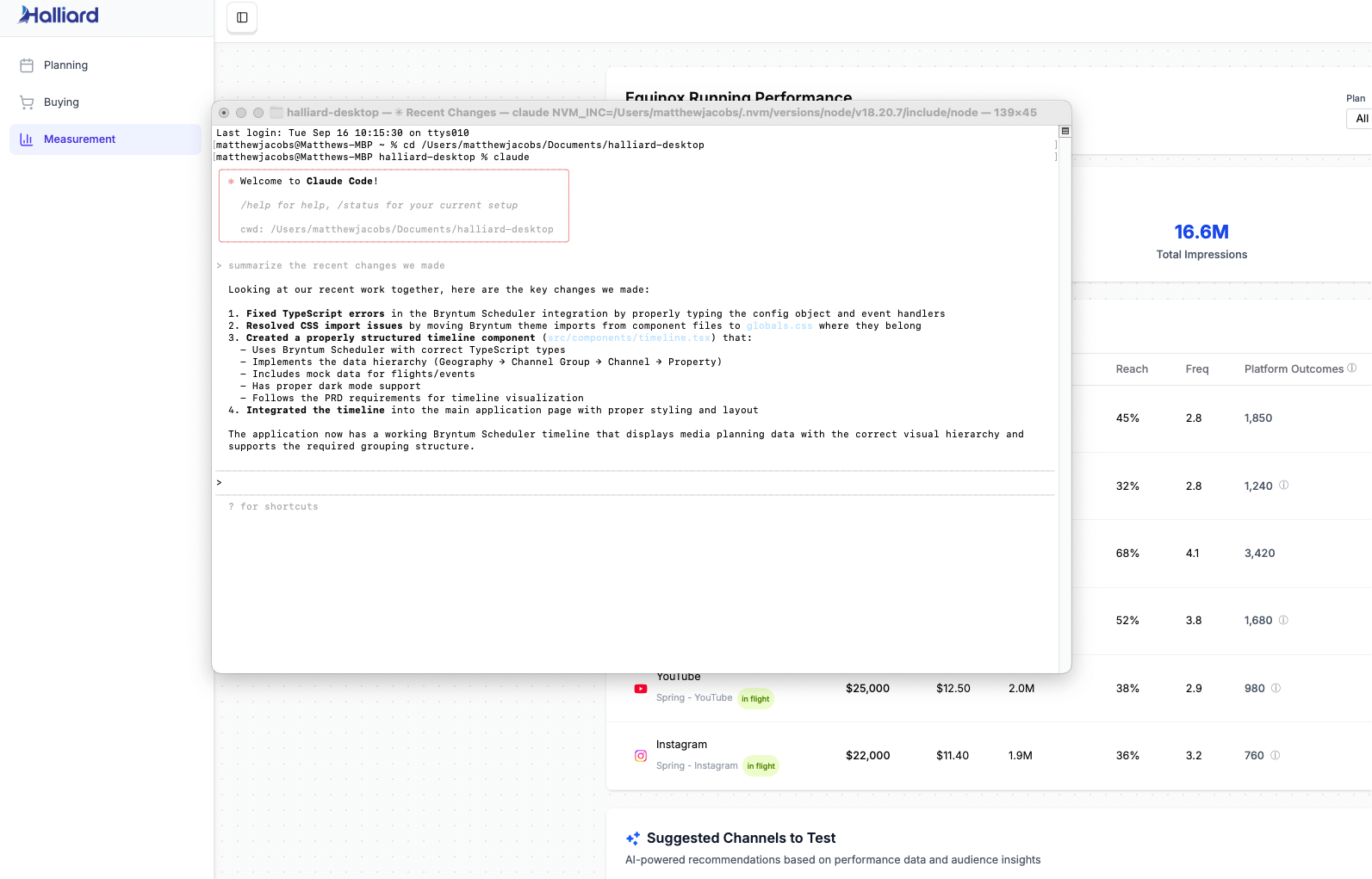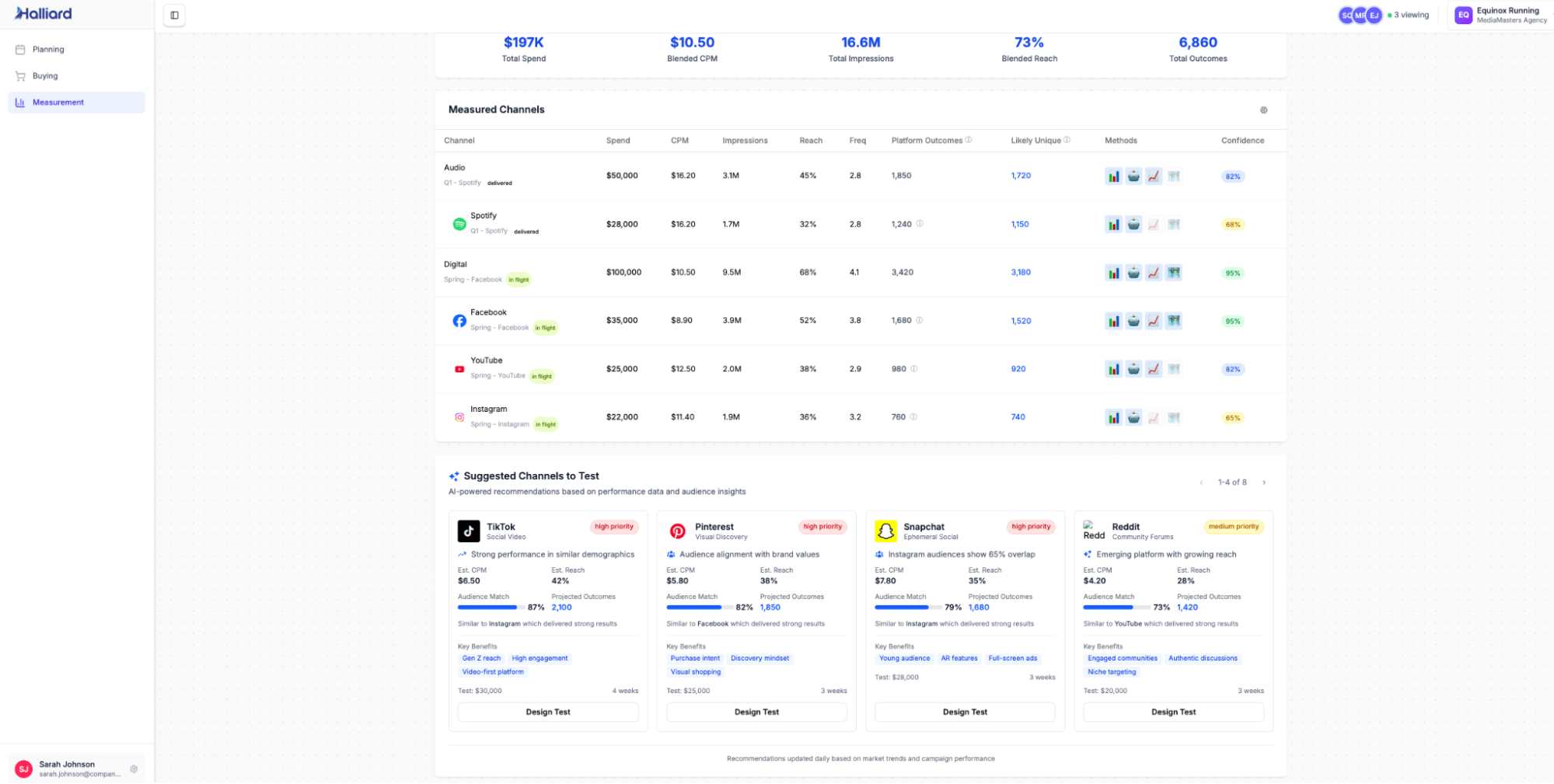Featured Use Case: Halliard

About Halliard
I’m Matthew, founder of Halliard’s media planning tool. Along with my co-founder and CTO, we built Halliard to give independent agencies an edge: improve client profitability, retain institutional knowledge, and strengthen trust with brands, all while keeping existing tools connected.
Because we were working with agencies from day one, speed was critical. We needed to quickly test and showcase different front-end concepts in client calls, without bogging down our production build. That’s where ‘vibe coding’ came in, guiding AI tools like Claude to spin up demo frontends fast, so we could validate ideas and keep the conversation focused on solving real agency problems. Our production frontend was built in a more structured way, but this rapid iteration approach helped us win early traction.
The challenge
When we started, we needed a working demo we could put in front of clients fast. At the heart of our platform are three core capabilities:
- Planning: Creating cross-channel media plans with budgets, reach, and frequency forecasts.
- Buying: Tracking spend, vendors, and delivery across every channel.
- Measurement: Tying performance and outcomes back to the original plan.
We initially experimented with AG Grid, but quickly hit limitations. There was no scheduler with tree functionality, and no seamless way to combine scheduler and grid views.
Why Choose Bryntum?
Before investing in AG Grid’s enterprise edition, we tried Bryntum and immediately saw that Scheduler and Grid together could cover both sides of our requirements in one consistent framework. With Bryntum as the backbone, we were able to show agencies a complete end-to-end workflow, not just isolated tables or timelines. That difference helped us secure early client trust and momentum.

Implementation
I’ll be honest, integrating Bryntum wasn’t easy at first. Since our entire frontend was vibe-coded through Claude, we ran into issues right away.
Claude kept trying to write plain JavaScript instead of using Bryntum’s APIs. That made things frustrating in the beginning. But after some experimenting, I found a process that worked:
- I scraped all the Bryntum Scheduler docs into a local folder.
- I added rules to Claude via a claude.md file that said, “always check the local docs first, then fallback to Bryntum’s website”.
- I set up an MCP (fire crawler) server that hosted the docs via context7.com.
That little system changed everything. Once Claude had structured context, it stopped writing vanilla JS and started producing usable Bryntum-based code.

Real-World Impact
With Bryntum Scheduler and Grid integrated, we were able to move from concept to demo in a fraction of the time it would have taken with hand-coded components. That speed made a real difference:
- Accelerated delivery: We built a working demo in weeks instead of months.
- Client-ready functionality: Agencies could immediately see complex scheduling, budget allocations, and cross-channel planning in action.
- Focus on strategy: Instead of wrestling with front-end code, we spent our energy refining workflows and client value.
- Early wins: Those demos translated directly into early client interest and revenue, giving us proof points to keep growing.

Looking Ahead
We’re just getting started. One of the next steps in our journey is building specialized sub-agents in Claude – including a Bryntum sub-agent trained on the Scheduler and Grid documentation. The goal is to give our AI development workflow even more precision: instead of relying on generic context, Claude will know exactly how to generate Bryntum-native code for new features.
At the same time, we plan to go deeper into Bryntum’s ecosystem as our platform grows. From richer scheduling logic to more complex grid integrations, Bryntum will remain at the core of how we visualize and manage media plans.
For us, the combination of AI-assisted development and Bryntum’s robust components has been a game-changer. It allows a small team to deliver enterprise-grade software at startup speed – and we’re excited to see just how far we can push it.
Learn More
Learn more about the Halliard here.
You can also learn more about Bryntum Scheduler by exploring the online examples or downloading and using the free 45-day trial version.
Bryntum also provides other web components, such as Gantt, SchedulerPro, Calendar, and Task Board, all of which have a free 45-day trial version.